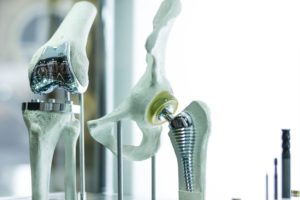Adult Stem Cell Therapy & Platelet Rich Plasma
Multimodal Analgesia for Joint Replacement Offers Better Outcomes
 The joints are some of the most used and abused parts of the human body, and whether due to arthritis, sports injuries, or basic wear-and-tear, many people find themselves undergoing joint replacement surgery in order to escape chronic pain and regain a better quality of life. While joint replacement technology has dramatically improved over the last decade, experts are still working to refine surgery methods and ensure the best results for all patients.
The joints are some of the most used and abused parts of the human body, and whether due to arthritis, sports injuries, or basic wear-and-tear, many people find themselves undergoing joint replacement surgery in order to escape chronic pain and regain a better quality of life. While joint replacement technology has dramatically improved over the last decade, experts are still working to refine surgery methods and ensure the best results for all patients.
At Bennett Orthopedics and Sports Medicine in Sarasota, Florida, Dr. Bennett works closely with patients to ensure all other non-invasive options have been considered before joint replacement surgery is initiated. He also offers cutting-edge replacement surgery procedures that accelerate recovery periods and minimize trauma to the body.
Dr. Bennett prides himself on always remaining on the cusp of orthopedic advances, including the finding that multimodal analgesia creates better outcomes for joint replacement surgery. According to a database study of more than 1.5 million joint replacements, multimodal pain management is associated with fewer perioperative complications, less opioid use, and shorter hospital stays.
Use of At Least 2 Analgesia Modalities Supports Better Outcomes
Based on data spanning ten years and 1.5 million total hip and total knee arthroplasties, researchers found that as multimodal pain management use increased, opioid use decreased along with post-op complications. COX-2 inhibitors and NSAIDS are the leading analgesic modes.
The data shows impressive results. Hospital length of stay decreased by 12.1 percent after hip arthroplasty and 9.3 percent after knee arthroplasty for patients who received more than 2 modes of analgesics in addition to opioids, compared with patients treated with opioids alone. Furthermore, overall opioid prescription use fell by 18.4 percent in hip arthroplasties when 2 or more analgesics were used.
Given their widely known addictive nature, there is no reason to rely solely on opioids for pain relief, especially when this study demonstrates the efficacy of multiple modalities of analgesia. One form of pain management that is worth attention and that was not explored in this study is platelet rich plasma (PRP). Best known for healing injuries in tissue, PRP can be used after joint replacement to accelerate healing, minimize inflammation, and reduce pain.
Dr. Bennett always uses PRP when it will benefit his patients, especially to limit post-surgical pain and support the healing process. To schedule your own joint replacement with Dr. Bennett and benefit from cutting edge procedures and techniques, call (941) 281-5776 to make an appointment.






